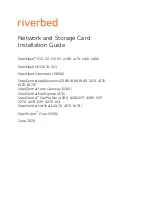
Chapter 10
| Interface Commands
Power Savings
– 310 –
Power Savings
power-save
This command enables power savings mode on the specified port.
Syntax
[
no
]
power-save
Command Mode
Interface Configuration (Ethernet, Ports 1-24)
Command Usage
◆
IEEE 802.3 defines the Ethernet standard and subsequent power requirements
based on cable connections operating at 100 meters. Enabling power saving
mode can reduce power used for cable lengths of 60 meters or less, with more
significant reduction for cables of 20 meters or less, and continue to ensure
signal integrity.
◆
Power saving mode only applies to the Gigabit Ethernet ports using copper
media.
◆
Power savings can be enabled on Gigabit Ethernet RJ-45 ports.
◆
The power-saving methods provided by this switch include:
■
Power saving when there is no link partner:
Under normal operation, the switch continuously auto-negotiates to find a
link partner, keeping the MAC interface powered up even if no link
connection exists. When using power-savings mode, the switch checks for
energy on the circuit to determine if there is a link partner. If none is
detected, the switch automatically turns off the transmitter, and most of
the receive circuitry (entering Sleep Mode). In this mode, the low-power
energy-detection circuit continuously checks for energy on the cable. If
none is detected, the MAC interface is also powered down to save
additional energy. If energy is detected, the switch immediately turns on
both the transmitter and receiver functions, and powers up the MAC
interface.
■
Power saving when there is a link partner:
Traditional Ethernet connections typically operate with enough power to
support at least 100 meters of cable even though average network cable
length is shorter. When cable length is shorter, power consumption can be
reduced since signal attenuation is proportional to cable length. When
power-savings mode is enabled, the switch analyzes cable length to
determine whether or not it can reduce the signal amplitude used on a
particular link.
Summary of Contents for EX-3524
Page 2: ......
Page 28: ...Figures 28 ...
Page 34: ...Section I Getting Started 34 ...
Page 58: ...Chapter 1 Initial Switch Configuration Setting the System Clock 58 ...
Page 72: ...Chapter 2 Using the Command Line Interface CLI Command Groups 72 ...
Page 156: ...Chapter 5 SNMP Commands Notification Log Commands 156 ...
Page 164: ...Chapter 6 Remote Monitoring Commands 164 ...
Page 218: ...Chapter 7 Authentication Commands Management IP Filter 218 ...
Page 268: ...Chapter 8 General Security Measures Port based Traffic Segmentation 268 ...
Page 292: ...Chapter 9 Access Control Lists ACL Information 292 ...
Page 312: ...Chapter 10 Interface Commands Power Savings 312 ...
Page 324: ...Chapter 11 Link Aggregation Commands Trunk Status Display Commands 324 ...
Page 366: ...Chapter 15 Address Table Commands 366 ...
Page 428: ...Chapter 17 VLAN Commands Configuring Voice VLANs 428 ...
Page 572: ...Chapter 25 IP Interface Commands IPv6 Interface 572 ...
Page 578: ...Section I Appendices 578 ...
















































